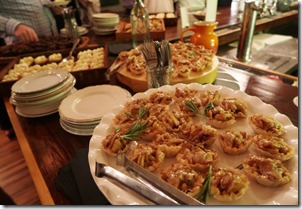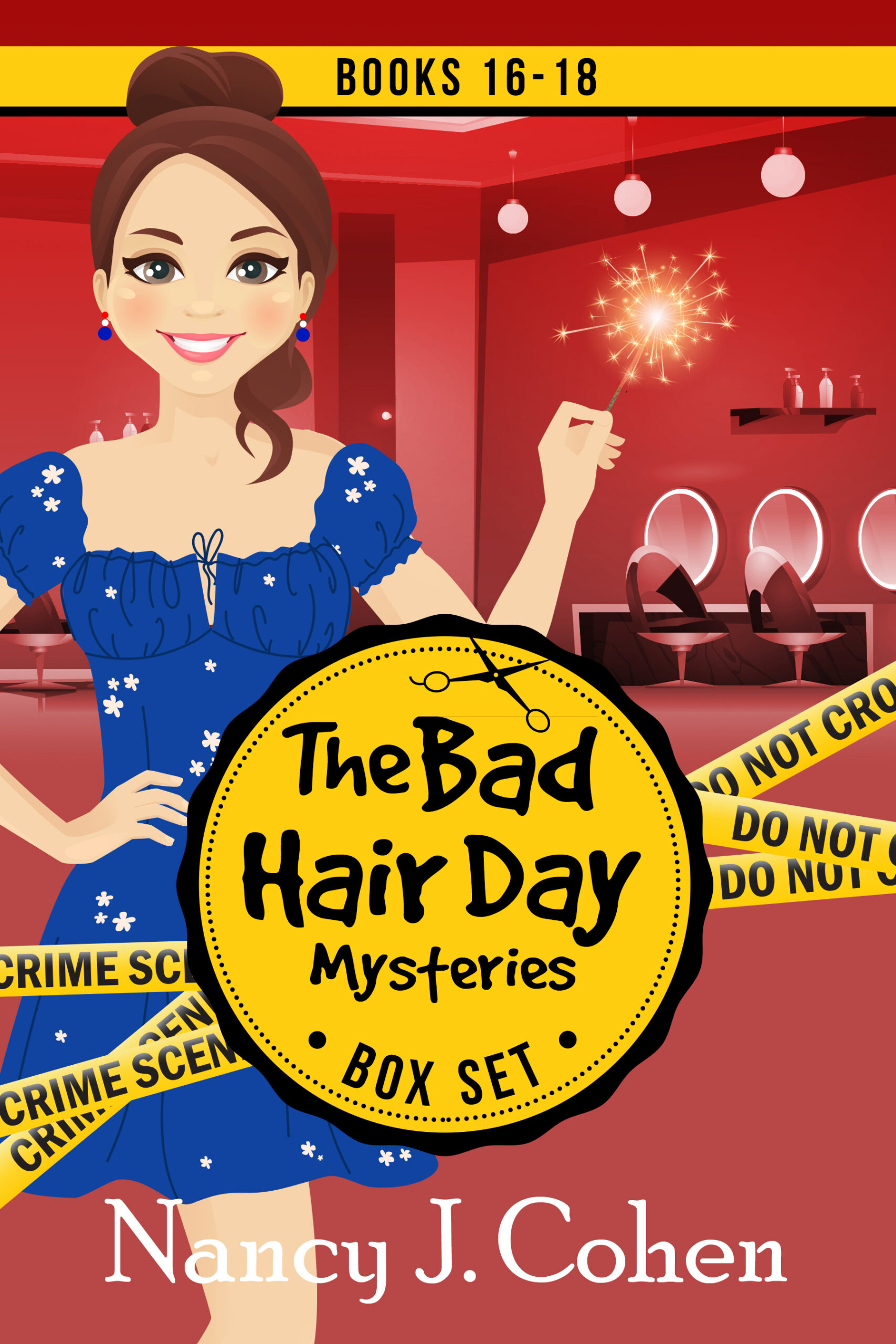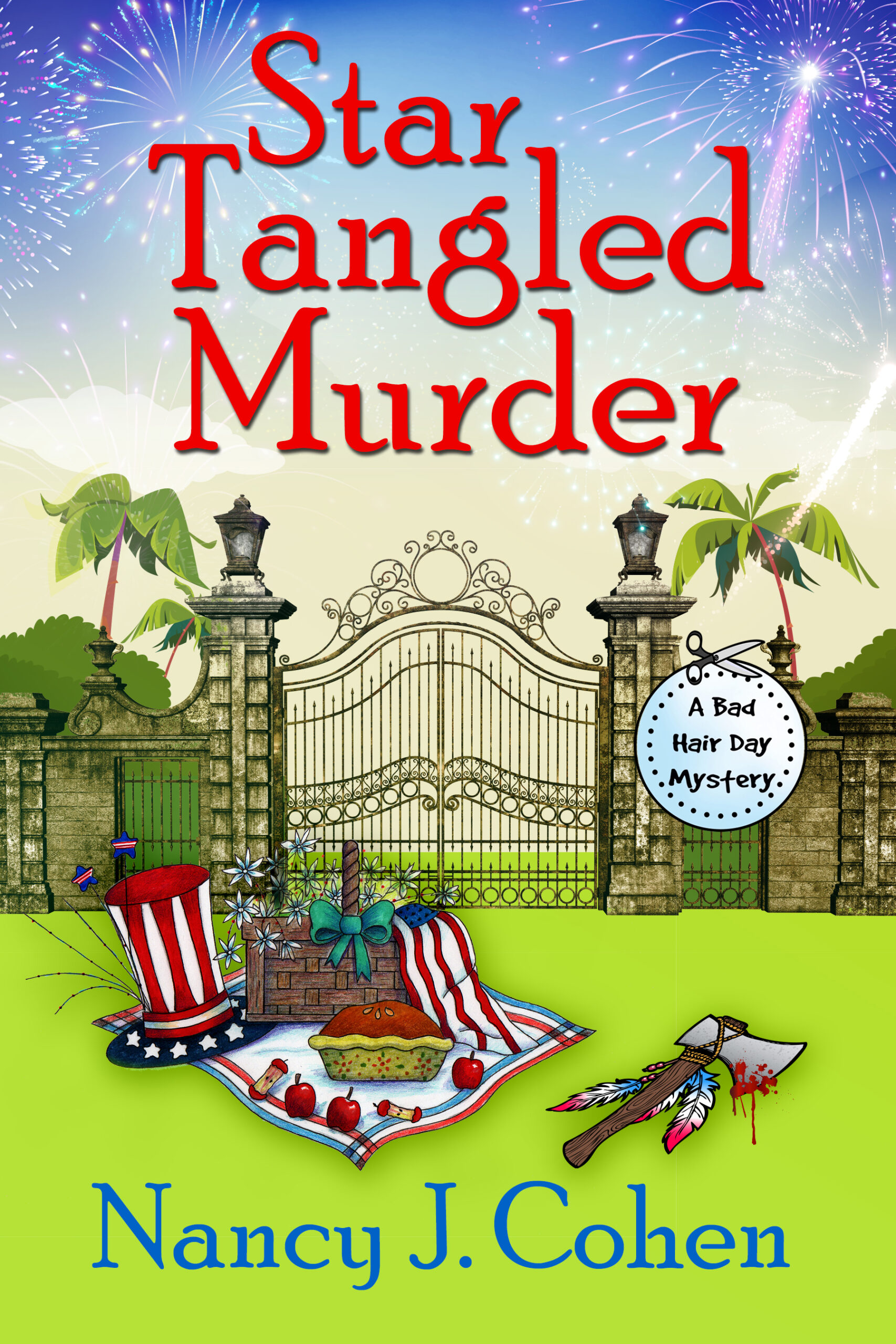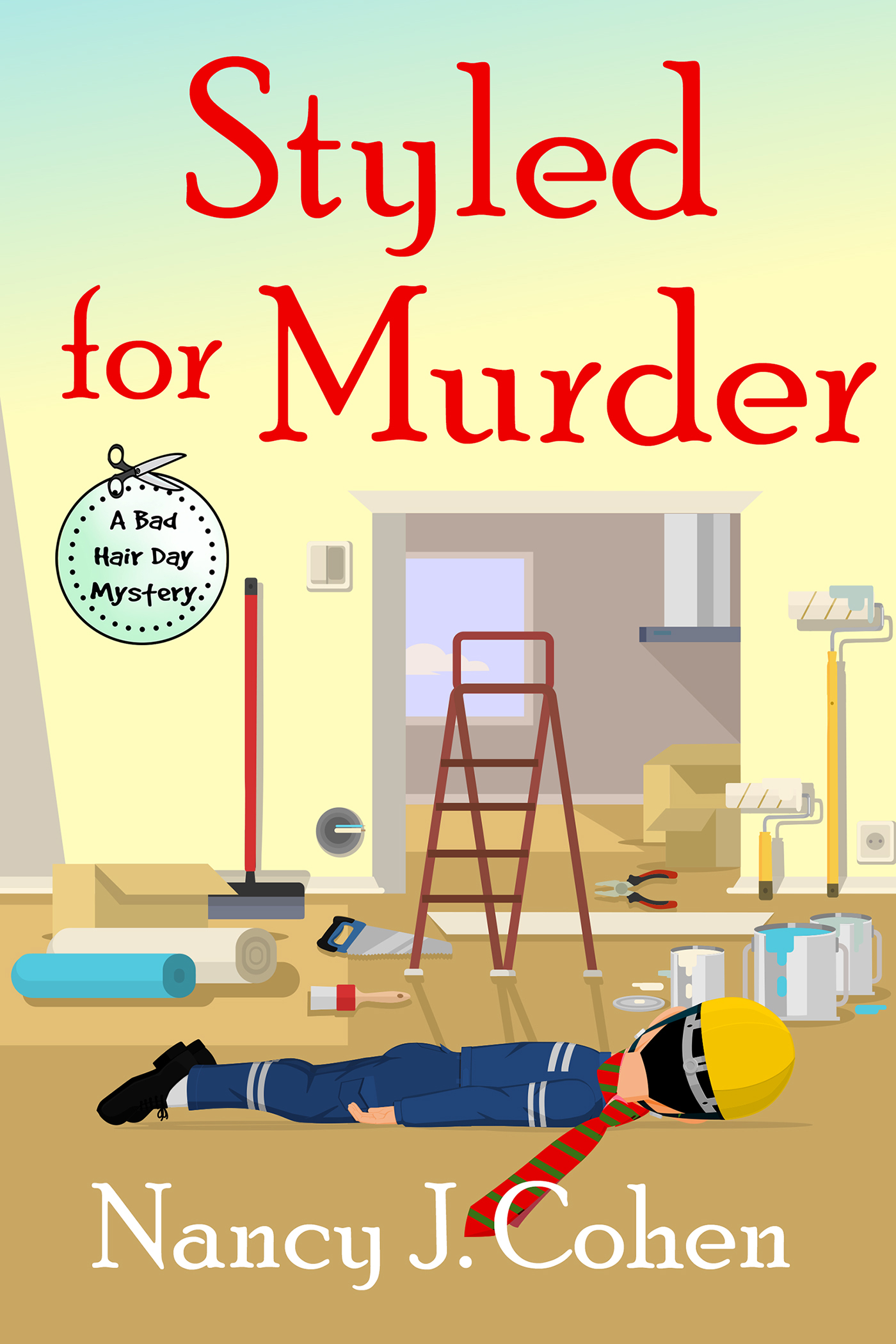I’m a big olive fan. When I was younger, I used to eat cream cheese and black olive sandwiches for lunch. Now I like to eat olives as an accompaniment to any kind of sandwich, or olive tapenade on crackers as an appetizer. I like green olives, but they can be saltier. Then we have Kalamata olives, which I enjoy along with nova on a bagel or in a Greek salad.

In Trimmed to Death, my hairstylist sleuth Marla Vail goes to interview a person of interest at an olive grove. Along the way, she learns more about this fruit from the olive tree.
What’s the difference between green and black olives?
The olive is a stone fruit, in which a fleshy outer covering surrounds a pit or stone, which in turn encases a seed. The outer flesh of an olive contains up to thirty percent oil. Olives grown for the table are different from olives pressed for oil.
Raw olives have a bitter taste. They need to be processed before we can eat them. They can be sun dried, but more commonly they’re treated to remove the bitter compounds and make them more palatable.
Green olives are picked before they ripen and are soaked in lye. Then they’re washed in water to remove the caustic solution and transferred to fermenting vessels full of brine. The brine is changed on a regular basis to help remove the bitter phenolic compound known as oleuropein. Fermentation occurs by natural microbes present on the olives that survive the lye treatment. These bacteria produce lactic acid that lowers the pH of the brine. This helps stabilize the product against unwanted pathogens. Once fermented, the olives are placed in fresh brine and acid-corrected before going to market.

Black olives are picked after ripening. Tree-ripened olives turn purple due to an accumulation of anthocyanin, a purplish pigment. These ripe olives need treatment before they’re edible. Salt-cured olives, produced in certain Mediterranean countries, are washed and packed in alternating layers of salt. This draws the moisture from the olives, dehydrating and shriveling them. Once cured, they are sold in their natural state without any additives. Oil-cured olives are cured in salt and then soaked in oil. Otherwise, there’s the fermentation process described above.

California black olives, although labeled as ripe on supermarket cans, are really green olives that have been soaked in lye and washed in water injected with compressed air. This process is repeated until the skin and flesh are oxidized, turning the olives black. Then the olives are washed and put into a fresh brine solution. Ferrous gluconate may be added to set the shiny black color before these olives are canned.
What is a Kalamata olive?
The Kalamata olive from this region in Greece has a deep purple color and is meatier than other varieties. These olives are placed directly into fermentation vessels full of brine until they appear almost dark brown or black. Most Kalamata olives are split to allow the interior to absorb the flavor. Beware these olives are usually sold with their seeds. Even if you get olives that are supposedly pitted, small bits might remain, so be careful when eating them.
Why are black olives sold in cans and green olives in jars?
Early California black olives sold in jars caused cases of botulism. As a result, the industry switched to a canning process. The artificially-ripened olives are heated to 240 degrees. A canned item can tolerate this temperature, but not a glass jar.
Green olives don’t undergo the addition of oxygen and are packed in brine. The salinity is high enough and the pH levels are low enough to inhibit bacterial growth, so they don’t have to be sealed in metal cans and cooked. These olives remain edible for many years stored in jugs, crocks, or jars. No refrigeration is required until opened.
Excerpt from Trimmed to Death
Hairstylist Marla Vail is talking to a Florida olive grower.
“Some olive varieties may be edible off the tree if they are sun dried first. Otherwise, the curing process can take a few days with lye treatment, or a few months with brine or salt packing.”
“What do you mean, with lye?” Marla wrinkled her nose at the thought.
“Lye processing is mainly used with green or semi-ripe olives,” Ben explained, as they crossed over to another row and then headed back toward the main complex. “The olives are soaked in lye for eight to ten hours to hydrolyse the oleuropein. Then they’re washed in water to remove the caustic solution and transferred to fermenting vats filled with brine. Or, you can avoid the lye process and put them directly into fermentation vessels. There are other methods as well. One technique involves artificially darkening the olive to make it appear black.”
This was news to her. “Are table olives different from olives used to make olive oil?”
“Yes. Some olives are grown to cure and eat, while others are prized for their use in making extra virgin olive oil. Olive mills press the oil, and the sooner you get the product to consumers, the better the quality of the oil. Demand has increased since the health benefits of olive oil have been recognized. In the U.S., we currently import about ninety-eight percent of the millions of gallons we consume per year. You’re not always getting the product you think you are with these imports. Fraud has become a multi-million dollar enterprise.”
Olive Oil Scams are a topic for another time. I hope you’ve enjoyed learning about this fruit and are now eager to check out the varieties in your local grocery store. Disclaimer: This information is based on my interpretation of the data I read. Any errors are unintentional.
Are you an olive fan? If so, which variety do you like best?
<><><>
TRIMMED TO DEATH
Savvy hairstylist and amateur sleuth Marla Vail enters a charity bake-off contest at a fall festival sponsored by a local farm. While she waits to see if her coconut fudge pie is a winner, Marla discovers a dead body in the strawberry field. Can she unmask the killer before someone else gets trimmed from life? Recipes Included!

Get your copy here: https://www.books2read.com/TrimmedtoDeath
































































